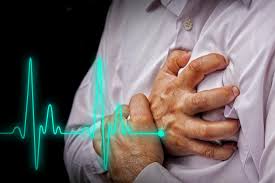
In rare circumstances, some children are born with a heart defect or disease which, if not treated properly, can prove to be fatal. These are called Critical Congenital Heart Disease (CCHD), and they are of the following types:
1.) Aortic Valve Stenosis
It is an uncommon but serious heart defect which makes up for 5% of congenital heart disease. When aortic valve, the valve which controls the flow of blood from the left ventricle to aorta, is narrowed, this condition is called Aortic Valve Stenosis. This lowers the amount of oxygen-rich blood flowing from the heart to other organs of the body and, thus, heart muscles thicken because they have to work harder to pump blood.
2.) Coarctation of Aorta
Coarctation of Aorta (CoAo) is when the Aorta itself is narrowed and less blood flows through it. This can occur either by itself or in combination with other heart defects. The most common heart defect that occurs with CoA is patent ductus arteriosus or ventricular septal defect.
3.) Patent Ductus Arteriosus
It is a rare congenital heart disease which affects 5 in 1,00,000 children. A blood vessel named ductus arteiosus connects aorta directly to the pulmonary artery, and this develops when the baby is in the womb. The role of ductus arteriosus is to direct the blood away from the lungs (which are not properly working at that stage). After the birth, ductus arteriosus closes. However, when the ductus aretriosus does not close, and extra blood gets pumped into the lungs, which in turn forces the lungs and heart to work harder, it is called patent ductus aretiosus (PDA).
4.) Septal Defects
A septal defect is when there is abnormality in wall of the heart, septum, which divides the chambers containing oxygenated blood from chambers containing deoxygenated blood. It is a common CCHD and can occur in 2 out of 1,000 babies. There are two types of septal defects:
a.) Aterial Septal Defect: When the two collecting chambers of the heart, left atria and right atria, have a hole, the condition is called Atrial Septal Defect (ASD).
b.) Ventricular Septal Defect: Ventricular Septal Defect (VSD) is when the two pumping chambers of the heart, left ventricle and right ventricle, have a hole.
Treatment for CCHD depends on the defect that a child has. It is always advised in the case of CCHD that parents should seek for best child heart specialist regardless of whether they are in Ludhiana, Udairpur, Rudrapurm, or any other small city in India.


